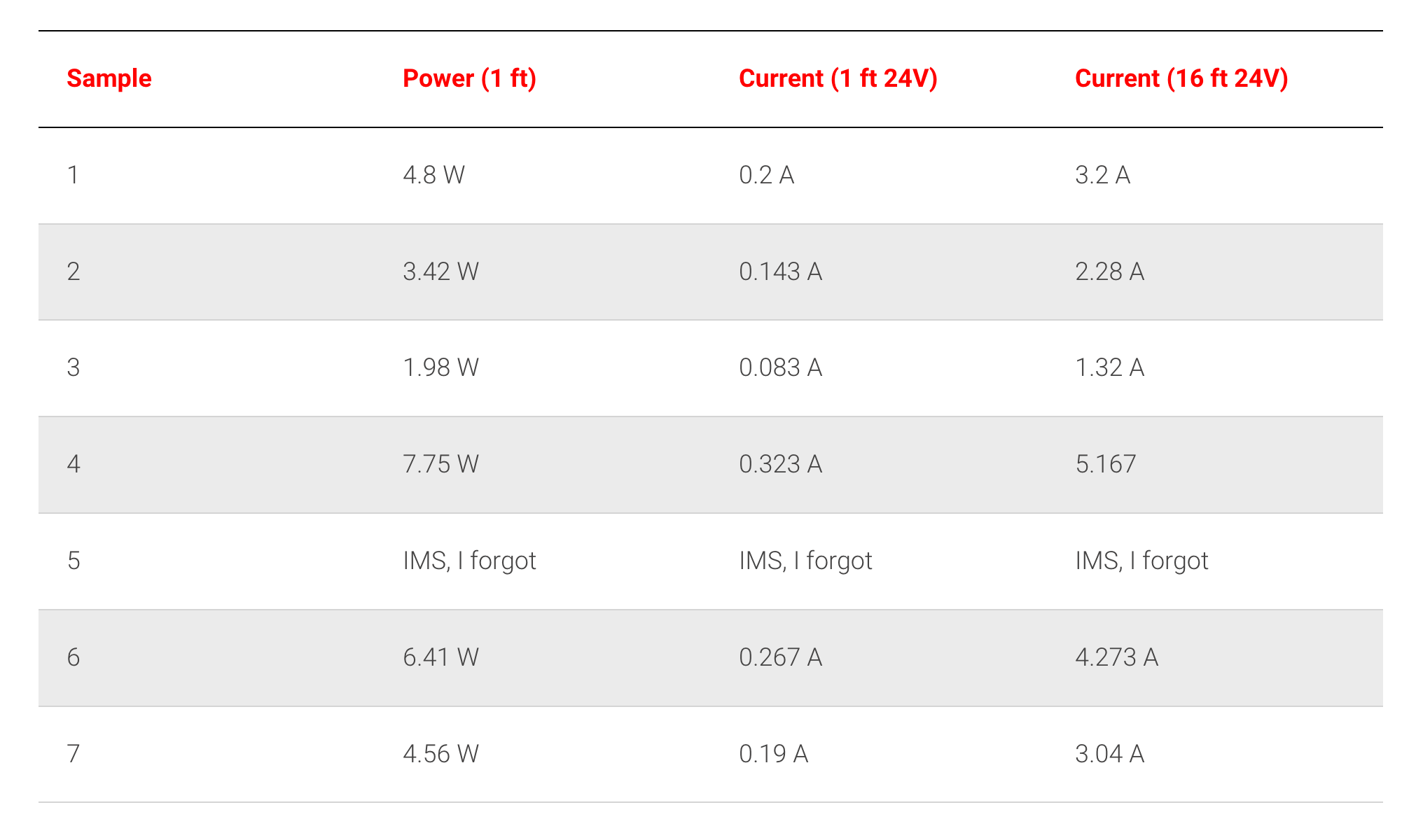Introduction
I noticed that my LED strip samples have different base thicknesses. Most samples are thin and bend easily; some are thick and hold their shape well after bending. I found only one metal in the strip base. The copper conductors transmit the power along the tape to all the LEDs. I thought that the inner conductors' different thicknesses meant different electrical characteristics. Aha! There's a lot to study here!
Next, I'm talking about regular strips no more than 1/2" wide with constant voltage.
Why are the conductors in the strip important? Many types of LED strips are high power to generate a lot of light (shine brightly). The more power, the more current. The conductors must be thicker and wider (cross-sectional area) to allow more current flow. Power losses will appear in the conductor, and that conductor will heat up if that area is not large enough. So less electricity will reach the far-end LEDs, and they will shine less. If the LEDs emit light with different intensities depending on their location - it is a bad strip.
So. The current through LED strip conductors depends on the power of that strip and can be up to 0.5 Amps for each foot of strip (8 Amps (!!) for a 16-foot (5 meters) strip).
My samples in the power consumption measurement experiment :

Test bench and measuring instruments
The resistance of a conductor is measured with a milli-(micro)ohmmeter usually. I don't have such a device, but I took measurements using this device's method. I mean the 4-wire method (Kelvin method). I measured the current through the conductor to be measured (as well as through the ammeter wires), also the voltage on that conductor at the beginning of the strip (not at the power supply output!!!! This is important!).


The resistance of the wires from the power supply and the ammeter (on the contacts of the LED strip) is excluded in this way of measurement.
The resistance of the voltmeter wires is unimportant because the voltmeter has a considerable internal resistance (usually mega ohms).
- The voltage is measured with a Greenlee DM-65 multimeter (accuracy for 0.5V DC = 0.9%).
- Current is measured with a Greenlee 93-606 multimeter (accuracy for DC < 10A ~ 2.5%).
- Power supply - RIDEN RD6024 precision power supply (I bought this power supply on Aliexpress and looked through many positive reviews on the Internet).
Measured data

Next, a simple calculation.
I multiplied the operating current of the LED strip and the internal conductor resistance. That's how I calculated the voltage reduction for a 16-foot strip. The LED chip section will not get 24 volts through 16 feet, but 24 volts minus the voltage reduction on the internal conductors.

20% or more is terrible, I think. Guys, and that's for LED tape that is only 16 feet long!
And here's the calculation for 32 feet. Just double the length.

47% !!! Half of the electricity is lost!
Conclusions
- Professional installers always connect LED strips no longer than 16 feet (5 meters) to the power supply. Otherwise, the voltage drop on the internal conductor is too significant. A large voltage drop is a large drop in light output on the far segments. LED strips more extended than 16 feet are connected in parallel pieces to the power source/s through thick copper wires to each piece.

- Cheap, low-quality LED strips cannot even be connected in 16-foot sections. Such strips have thin internal conductors with a significant reduction in power supply. Bad manufacturers skimp on the thickness of the inner conductors of their strips and create problems for customers.
- The 24V power supply voltage is much better for high-power bright LED strips. More voltage, less current. Less current, less voltage drop on a long strip. The manufacturer must use thick internal conductors for high-power LED strips of 12V (and even more so 5V!). Such strips will be expensive and hard to install. For example. Imaginary LED strips have the same power and internal conductors as my samples but with a voltage of 12V. The drop in supply voltage will be huge.

0.7 V… ah-ha-ha
 teardownit
teardownit
Discussions
Become a Hackaday.io Member
Create an account to leave a comment. Already have an account? Log In.